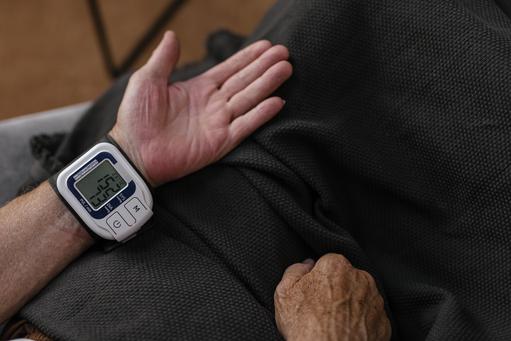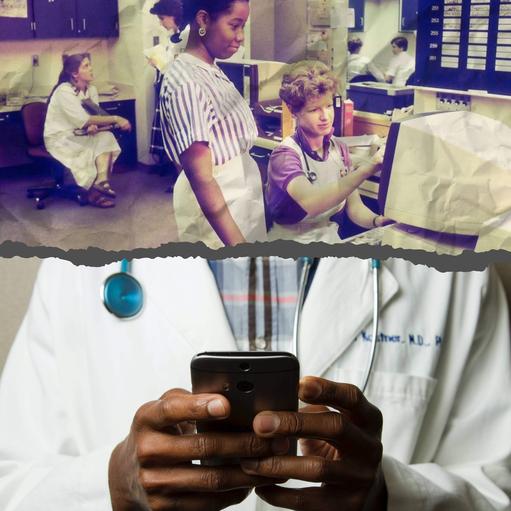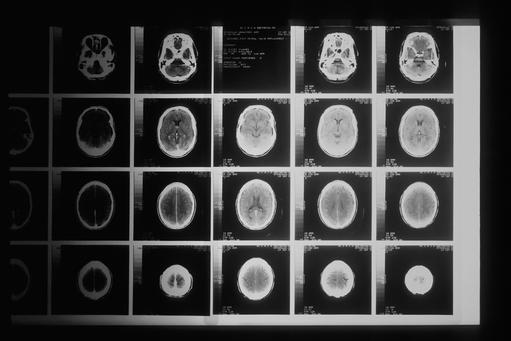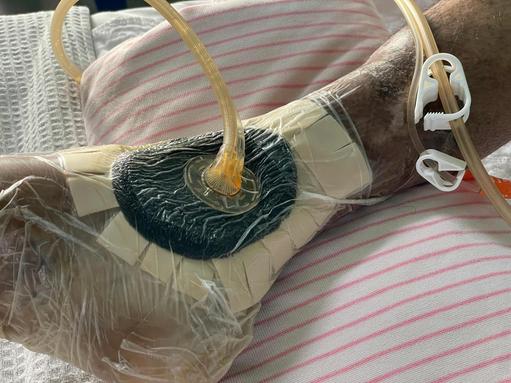- Women's health needs are linked to their biological, physiological and psychosocial makeup, setting them apart from men and requiring specialized care
- Women's health has been inadequately addressed
- Gender inequalities continue and lead to uneven healthcare accessibility, resulting in postponed diagnosis and less than optimal treatment outcomes
- Women play a pivotal role in families, communities, workforces and society
- Investing in comprehensive lifetime care for women, rather than disparate, periodic interventions, is a human right, a social responsibility and an astute economic strategy
Transforming Women's Health
Pioneering a Comprehensive Lifelong Healthcare Paradigm
Preface
In a significant shift, gender issues pertaining to women’s health, are experiencing change driven by women’s growing refusal to accept secondary status. This change is accompanied by the substantial contributions women make to economic growth, stemming from their expanding presence in the workforce and their influential roles within families, communities, and society. While pharmaceutical and medical technology sectors have developed specialized treatments for certain women’s disorders, there remains a need for a proactive, lifelong approach to women’s healthcare. Although efforts to address conditions like menopause and breast cancer are commendable, they risk commodifying women’s health. To meet their diverse health needs and acknowledge the pivotal roles they play in both developed and developing economies, a comprehensive and sustainable healthcare model is necessary. This is more than episodic interventions and calls for an understanding of, and sensitivity towards the unique physiological and psychological challenges women encounter throughout their lives. A proactive paradigm prioritizing prevention, early detection, and treatment is mooted. Realizing this calls for collaboration among healthcare providers, institutions, advocacy groups, governments, and payers. While commercial enterprises may think that participating in a comprehensive lifelong strategy for women’s health is beyond their scope, the changing business environment, shaped by concerns related to Environmental, Social, and Governance (ESG) matters, highlights the ethical, social, and commercial importance of supporting a holistic approach to women’s healthcare.
In this Commentary
This Commentary is in three parts. It starts by briefly describing what constitutes women's health and suggests why women’s healthcare is important, which is followed by a short historical perspective and mention of gender disparities that still exist despite improvements. Part 2 describes a comprehensive lifetime healthcare strategy for women, to replace current disparate, episodic interventions, and contends that such a holistic approach has the potential to yield substantial health, wellbeing, and socio-economic benefits. The size of the global women’s healthcare market and some of the leading companies participating in it are described in Part 3. Takeaways follow and stress the significance of a comprehensive, lifetime healthcare model for women.
Part 1
Women’s health
Women's health is a critical and multifaceted area of healthcare that focuses on their specific biological, physiological, and psychosocial needs throughout their lifetime. It encompasses a wide range of conditions, from reproductive and gynecological health to hormonal changes, pregnancy, and menopause. Reproductive health includes family planning, contraception, and fertility management. Providing information about birth control and fertility treatments helps women to make informed decisions about their reproductive choices. Addressing issues related to sexual health, such as sexually transmitted infections (STIs) and sexual dysfunction, encourages women maintain a healthy intimate life. Gynecological health is another key component of women’s health, involving the prevention, diagnosis, and treatment of conditions affecting the female reproductive system. Routine screenings like Pap smears and mammograms help in early detection of cervical and breast cancers. Healthcare professionals should be adept at managing common gynecological conditions such as menstrual disorders, polycystic ovary syndrome (PCOS), endometriosis, and uterine fibroids. Throughout a woman's life, hormonal changes influence her physical and emotional wellbeing. Addressing concerns related to menstruation, hormonal imbalances, and menopause is important. Additionally, pregnancy and childbirth require prenatal care, delivery support, and postpartum care for both mother and baby. Sensitivity, empathy, and a patient-centered approach are essential. Only by recognizing and addressing the needs and challenges faced by women, can healthcare providers effectively contribute to female patients' overall wellbeing and quality of life.
The importance of women’s health
Historically, women’s health has predominantly revolved around reproductive aspects due to their perceived primary role. Despite enduring years of inadequate representation and underfunding in medical practice and research, the importance of prioritizing women’s health is a crucial step towards reducing gender disparities, optimizing outcomes, and fostering societal equity. Overlooking the holistic consideration of women’s distinctive lifelong attributes can lead to undetected or untreated disorders. Central to this is women’s reproductive and maternal wellbeing, which not only molds their own health but resonates across generations, influencing the wellbeing of their offspring. Thus, ensuring ample prenatal care, maternal nutrition, and birthing support is pivotal in securing favourable results for mother and infants. Prioritizing women’s health leads to the reduction of preventable diseases. Comprehensive female health programmes encompassing screenings, vaccinations, and early detection of conditions such as breast and cervical cancers play a crucial role in disease prevention and prompt treatment, thereby amplifying overall health and longevity. Women’s wellbeing is a foundation for personal wellness, gender parity, and societal advancement. Optimal female health empowers women to confidently engage in decision-making, pursue education, seize economic opportunities and more. By concentrating on women’s health, we not only champion proactive care and lifestyle adjustments benefitting individuals and future generations, but also alleviate the large and rapidly growing burdens on healthcare systems.
Brief history
Over time, women's healthcare has experienced gradual advancements and improvements. In ancient times knowledge about women's health was passed down through oral traditions and informal practices. Women relied on natural remedies and herbal medicine for managing reproductive health, childbirth, and general wellbeing. During the medieval and Renaissance periods, women's healthcare was mainly in the hands of midwives and female healers. Their expertise in childbirth was valued, but formal medical education and knowledge were limited. As medical knowledge advanced during the 18th and 19th centuries, some progress was made in understanding women's anatomy and reproductive health. However, societal norms and prejudices often hindered women from either accessing formal medical education or seeking medical attention, which resulted in continued reliance on midwives and home remedies. The mid-19th century brought changes. In 1849 Elizabeth Blackwell, a British-American, became the first woman in US to earn a medical degree, and the first woman on the Medical Register of the General Medical Council for the UK. Florence Nightingale, best known for her pioneering work in nursing, played a significant role in the Crimean War (1853-1856), where she improved nursing care for wounded soldiers and established modern nursing practices, which have had a lasting impact on nursing and public health. Their achievements, and those of others, subsequently laid the foundations for the involvement of women in the field of medicine. However, societal attitudes still posed obstacles to women's healthcare advancements.
The 20th century saw progress in women's healthcare. With the suffrage movement and feminist activism, women's rights and health issues gained attention. In the early 1900s, the first birth control clinics were established, allowing greater control over reproductive choices. Further progress was made during the mid-20th century. In 1960, the US Food and Drug Administration (FDA) approved the first oral contraceptive pill, which changed family planning and reproductive rights. In the following decades, women’s movements advocated access to safe and legal abortion. Women's healthcare expanded further in the latter half of the 20th century, with increased research and understanding of women-specific health concerns. Breast cancer screenings, cervical cancer screenings (Pap smears), and other preventive measures became more widely available.
In the 21st century, women's healthcare continued to progress, with an emphasis on preventive care, and early diagnosis. Advances in medical technologies and research further improved women's health outcomes. Efforts were made to address disparities in healthcare access for different populations of women, including those based on ethnicity, socio-economic status, and geographical location. Initiatives to improve maternal health, reduce maternal mortality, and provide better support during childbirth gained momentum. Awareness campaigns focusing on issues, such as breast and cervical cancers, helped in early detection and treatment. Taboo and often misunderstood subjects like menopause are now widely discussed, primarily to educate people. Additionally, women's mental health received more attention, leading to increased resources and support. While challenges remain, the activities of healthcare professionals, researchers, advocates, policymakers, and commercial enterprises continue to help shape a healthier future for women.
Gender disparities in healthcare
Despite advances in women’s healthcare, gender disparities have been a persistent and concerning issue, with women often facing underrepresentation in medical research and practice. Such differences result in unequal access to healthcare services, delayed diagnosis, and suboptimal treatment outcomes. Women's health concerns have often been underrepresented in clinical trials, which results in a lack of evidence-based treatment options tailored to female physiology and health risks. This disparity can be pronounced in conditions such as heart disease, where symptoms and risk factors may differ between men and women. Women often face barriers in accessing comprehensive reproductive health services, including contraception, family planning, and safe abortion services. Some regions have limited availability of these services due to legal, cultural, or religious factors, which can impact women's control over their reproductive choices and health. In many parts of the world, maternal mortality rates are disproportionately high, particularly in low-income countries. Every two minutes, a woman dies from preventable causes related to pregnancy and childbirth. Lack of access to appropriate prenatal care, skilled birth professionals, and emergency obstetric care are contributory factors, reflecting a significant gender-based health inequity. Some chronic autoimmune diseases, such as lupus and psoriatic arthritis are more prevalent in women, yet diagnosis and treatment can be delayed or less effective due to gender biases in medical research and practice. Studies have shown that women's pain is often undertreated compared to men's, potentially due to biases in healthcare providers' perceptions of pain and discomfort. This can lead to inadequate pain relief and poorer health outcomes. While mental health problems affect both genders, women frequently encounter distinct challenges. These encompass conditions like postpartum depression and anxiety, which are primarily linked to hormonal imbalances, but also associated with factors such as insufficient sleep and inadequate support systems. Societal stigma around mental health, combined with gender norms, can discourage women from seeking help and support for their mental wellbeing.
In some societies, limited education and information about healthcare can lead to women having less knowledge about preventive measures, symptoms, and treatment options, which can result in delayed or inadequate care for certain conditions. Gender-based violence has health consequences, including physical injuries, mental health issues, and increased risk of sexually transmitted infections. Limited access to safe spaces, support services, and legal protection can hinder women's ability to escape such situations. Further, women tend to live longer than men, but they may also face difficulties accessing appropriate healthcare and support in their later years. Consequently, elderly women often experience greater social isolation, limited financial resources, and increased prevalence of certain health conditions.
Part 2
Comprehensive lifetime care
With increasing recognition of the contributions women make to economic growth and stability, their health has gained relevance. The emergence of women's economic influence and direct participation in the workforce has prompted a shift in our approach to women's health. The pharmaceutical and medical technology industries have made progress by developing medications and devices targeting specific health issues. Notwithstanding, it seems timely to move beyond such approaches and focus on a comprehensive care model that supports women throughout their lives.
Pharmaceutical and MedTech companies have tapped into the women’s healthcare market by focusing on high-volume areas, like mensuration, menopause, and breast cancer. While such efforts are improvements, women deserve better. In recognition of the significant contributions they make to society, and the changing perspectives of corporate social responsibility, it is time to pivot towards a new approach to women's health. Rather than focusing on reactive healthcare policies to address specific disorders, a comprehensive and proactive care model is required to address women's diverse healthcare needs. Women's health encompasses more than just the treatment of certain illnesses and diseases. It involves addressing the unique physiological and psychological aspects they experience throughout their entire lives. Thus, a shift towards providing lifetime care and support for women seems timely.
According to the World Health Organization (WHO), “Health is a state of complete physical, mental, and social wellbeing and not merely the absence of disease or infirmity”. Achieving this for women requires a collaborative effort from healthcare providers, institutions, organizations, governments, and payers. This should aim to break down barriers, improve access to quality care, and foster health equity for all women, regardless of their socioeconomic status or geographical location. Certain businesses may view participating in a comprehensive women’s health approach as beyond their commercial interests. However, with ESG concerns reshaping the landscape, collaborating in a women’s holistic healthcare strategy becomes ethically, socially, and commercially logical.
Benefits of a lifetime health programme
A proactive lifetime healthcare approach would result in long-term cost savings by identifying health concerns early and reducing expensive treatments, benefiting individuals, and trimming large and rapidly growing healthcare burdens. This allows resources to be reallocated for other needs. Moreover, enhanced women's health has a positive economic impact. Countries like the US and UK have relatively high female workforce participation rates: ~57% and ~72% respectively. A healthier workforce contributes to higher productivity, benefiting both businesses and economies.
Investing in women's lifetime healthcare also helps narrow gender pay gaps by providing access to consistent healthcare, promoting career advancement, financial security, and workplace parity. Prioritizing prevention and addressing women's health needs drives demand for innovative solutions and services, potentially leading to advancements in pharmaceuticals, medical technologies, and healthcare practices. Nation’s investing in holistic women's health can gain a competitive edge with an educated, committed female workforce, which supports stability, and innovation. Additionally, effective women's healthcare reduces reliance on public aid, channeling fiscal savings toward societal wellbeing.
The women's health market holds significant growth potential. Unique concerns provide opportunities for innovative solutions and services such as advanced fertility treatments and personalized therapies. Telemedicine and digital healthcare platforms expand access, especially in underserved regions. Amid competition from established players, newcomers can thrive by emphasizing innovation, patient-centered care, and technology integration. Adhering to safety standards and addressing cultural norms are crucial for building trust. Overcoming stigmas through education and targeted campaigns encourages women to prioritize their health. By collaborating in a comprehensive lifetime approach and strategic R&D, companies can gain a competitive edge.
Part 3
Women’s healthcare market
According to Grand View Research, in 2022, the global women’s health market was valued at ~US$41bn, and is expected to grow at a compound annual growth rate (CAGR) of ~5.4% over the next decade. Market growth is attributed to aging populations of women, and the increasing prevalence of women-centric diseases such as osteoporosis, menopause, and breast cancer. The World Health Organization (WHO) reports that breast cancer is the biggest killer of women, but only ~50% of them realize this. In 2020, there were 2.3m new cases of the disease globally and ~685,000 deaths.
There are many companies marketing products for women’s health. Pfizer, one of the world's largest pharmaceutical companies has a presence in women's health. They have developed and market contraceptives, hormone replacement therapies, and treatments for menopause-related symptoms. Merck & Co. is a global healthcare company that offers a range of products for women's healthcare, including fertility treatments, contraceptives, and medications for conditions like human papillomavirus (HPV) and osteoporosis. Johnson & Johnson, a diversified healthcare company, offers medicines for menopause, products for menstrual health, and contraceptives. Bayer, a multinational pharmaceutical company known for its contributions to women's healthcare, produce intrauterine devices (IUDs), and medications for various women's health conditions and wellbeing. AbbVie has offerings that include treatments for endometriosis and hormone replacement therapies. Hologic, a MedTech specializing in women's health, produces imaging systems, diagnostic tools, and surgical equipment for gynecological and breast health, including mammography and biopsy solutions. Medtronic, a global healthcare technology leader, provides medical devices for gynecological surgeries and treatments for urinary incontinence. CooperSurgical, a dedicated women's health company, offers a wide range of medical devices and products for gynecological procedures, fertility treatments, and obstetrics.
Takeaways
In a world where gender-specific health disparities persist, companies engaged in women’s health have the capacity to make an impact on women’s overall wellbeing. The growing recognition of distinct healthcare requirements for women emphasizes the significance of committing resources to women’s health, suggesting a choice that is both commercially astute and socially just. In addition to reactive interventions, businesses might consider partnering with stakeholders to support a comprehensive healthcare strategy tailored to women’s individual life journeys. This requires leadership, investing in R&D, and harnessing the potential of emerging technologies like digital health platforms, telemedicine, and AI-driven data analytics. Such an endeavour has the potential to change healthcare accessibility, amplify diagnostic precision, and refine disease management exclusively for the female demographic. By participating in such an approach, companies not only position themselves as leaders in an important market segment but also contribute to fostering a healthier, more equitable world for women throughout their entire lifespan.
|



































